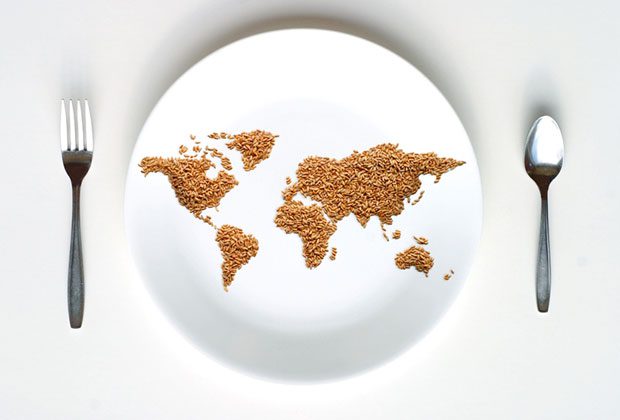Feeding the planet 2050

For most of us, it’s pretty easy to go about the day-to-day and not give a second thought to food security. But what if you knew that within 40 years, nine billion people will live on our planet and will need twice the energy, 40 percent more water and 70 percent more food than we have today? To keep up with the burgeoning population growth, Jason Clay of World Wildlife Fund puts it this way. “In the next 40 years, our planet will have to produce as much food as we have in the last 8,000.”
It’s a sobering proposition, but thankfully the people at The George Washington University and Planet Forward are proactively bringing the best minds together to tackle the matter head on.
Their Feeding the Planet Summit took place Oct. 30 at Furman and assembled participants from agriculture, the private sector, academia, the media, and government to explore downstream food security (or lack thereof) and put forward solutions to the looming crisis.
The invitation to the live video stream of the Feeding the Planet Summit was open to all, but only five universities nationwide were invited by GW Planet Forward to attend onsite. Having accepted the invitation, the Shi Center for Sustainability then asked Professors Jeanine Stratton and Glen Halva-Neubauer to represent Furman at the event. Eight Furman students were also selected to be part of the delegation.
One of the eight students attending, John Kiser ’14, says, “It was a conference that’s necessary for our survival. It also allowed for great minds and strong companies to collaborate on our future.”
Marketing Professor Stratton, who has an interest in food systems, came away with a greater appreciation of the complex nature of food security. She says, “Food security is a wicked issue. It takes a systems approach to ensure long-term solutions —a commitment to considering all perspectives, all resources and all people.”
Stratton says the multi-disciplinary approach brought to the summit opened up whole new ways of thinking about food security and generated fresh conversations about the challenge. The summit offered a stage for wrestling with topics like Genetically Modified Organisms, 3-D food printing, safe cooking methods, climate change, mobile technology for smallholder farms, and even cricket flour, for goodness’ sake.
So what can we do in the face of an impending unsustainable food supply?
You’ve heard the phrase, “think globally, act locally.” It may sound trite, but there are indeed things we can do individually to help curb the trajectory of food insecurity. But it all starts with the conversation, says Stratton. She believes in the importance of infusing topics of food security into classes at Furman, and that open dialogue leads to action at the local level. “We can start with changing individual behaviors to grow social impact, including analyzing the root causes versus treating symptoms of the issues presented.”
To make progress in changing individual behaviors, Stratton says we need more information as consumers. “We need to consider where our food comes from … the whole supply chain. We frequently take for granted how food is grown or produced, or the welfare of the systems engaged to produce our food, or even consumption patterns. We often don’t realize our daily food choices have local and global impact. We need to learn to make well-informed buying decisions.”